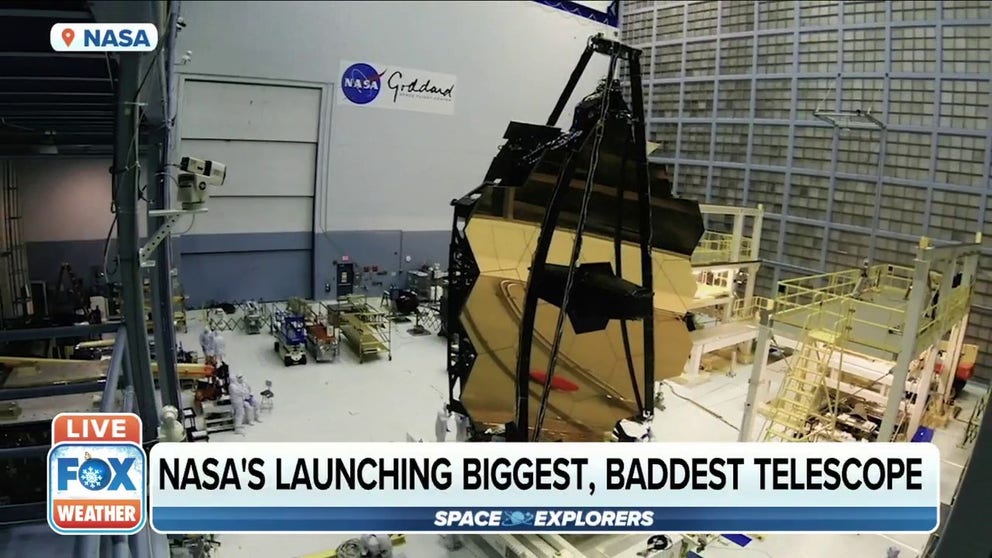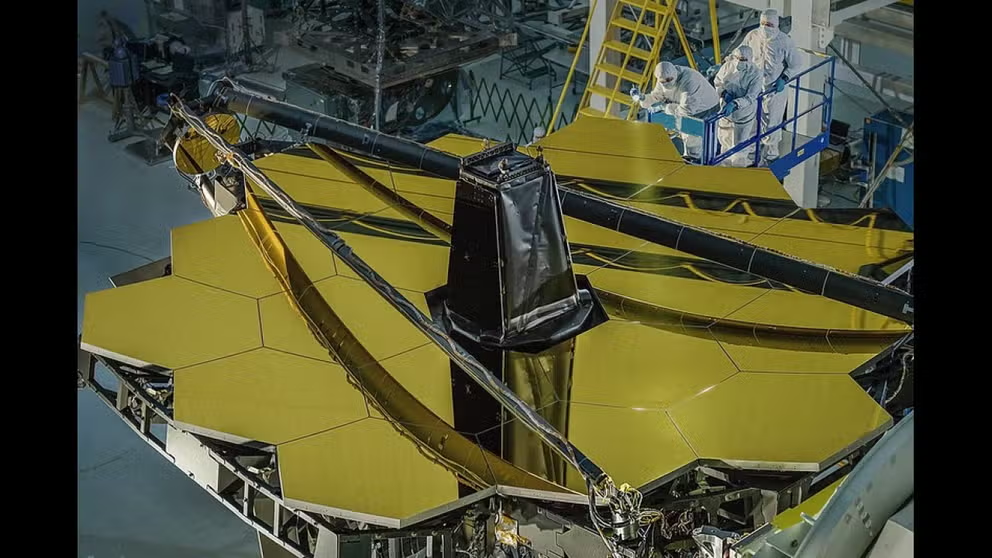Light travels 'like a slinky' through the universe to reach James Webb Space Telescope
JWST is powerful enough to observe first galaxies
NASA to launch James Webb Space Telescope on Christmas Day
The telescope was scheduled to launch Friday. They're now hoping to launch early Christmas morning, during a window that spans 7:20 to 7:52 a.m. EST.
NASA's Hubble Space Telescope has been making discoveries for over 30 years; however, its successor, the James Webb Space Telescope, will look at the universe in a whole new light.
Set to launch on Christmas morning from French Guiana, Webb is the largest, most powerful space observatory ever built. Scientists have been waiting decades for this moment. Hubble's mission hadn't even begun when plans for Webb started.
"This is a gigantic telescope, 21-feet in diameter, and it is going to probe some of the earliest galaxies and stars but also study some of our nearest planets at infrared lengths of light," said Dr. Knicole Colón, an astronomer at NASA's Goddard Spaceflight Center.
Webb and Hubble are very different for several reasons.
After launch, Webb will take about a month to reach its final orbit, 1 million miles from Earth, known as the second LaGrange point. Whereas Hubble sticks closer to home, operating about 350 miles above Earth.
LEARN: The most powerful space telescope by the numbers
Instruments on Hubble can also observe a small portion of the infrared spectrum, but Webb primarily sees in infrared covering a broader wavelength coverage. Infrared observations are essential because this light can penetrate the dust surrounding stars and planets that are just forming, which can hide visible light.
James Webb Space Telescope: By the numbers
James Webb Space Telescope, the most powerful space observatory ever built, is about to begin its mission.
"Hubble looks mostly at visible light, the colors you and I see every day," Colón explained. "Webb looks at much redder colors, and with that, we can learn a lot more about the universe, including the heat that comes from these early galaxies and stars."
Observing different light spectrums is critical to understanding the universe and our solar system and answering questions like how we got here.
"With light, it kind of acts like a slinky if you can imagine as it travels through the universe, it starts expanding, and by the time it reaches our telescope, it's actually light that we're seeing from some of these earliest galaxies and stars," Colón said. "And this is (infrared) light, we've literally never seen before, so we don't know what the early universe looks like, so it's going to be really revealing."
The $11 billion mission will also examine other worlds outside our solar system known as exoplanets. Colón is the deputy project scientist for exoplanet science for the James Webb mission.
Thanks to another NASA space telescope, called Kepler, scientists have confirmed more than 4,000 exoplanets. These worlds orbit stars outside our solar system, and the growing field of exoplanet study could lead to the discovery of habitable planets.
Webb will be observing some of these exoplanets that are the same size and temperature as Earth. These planets are in what's known as the Goldilocks or habitable zone, not too close and not too far from their star with the proper temperatures to possibly support life.
"With Webb, we're going to start looking at these atmospheres and see if they are anything at all like Earth," Colón said. "Do they have water, carbon dioxide, methane? So that's how Webb is going to help us advance our search (for life)."
Colón said she is most excited for Webb to make unexpected discoveries, including new worlds.
"Maybe there will be new planets that we haven't discovered yet," she said. "Surely they're out there, and Webb will unveil some exciting ones."
After launch, it will take about six months before Webb can begin science observations.

